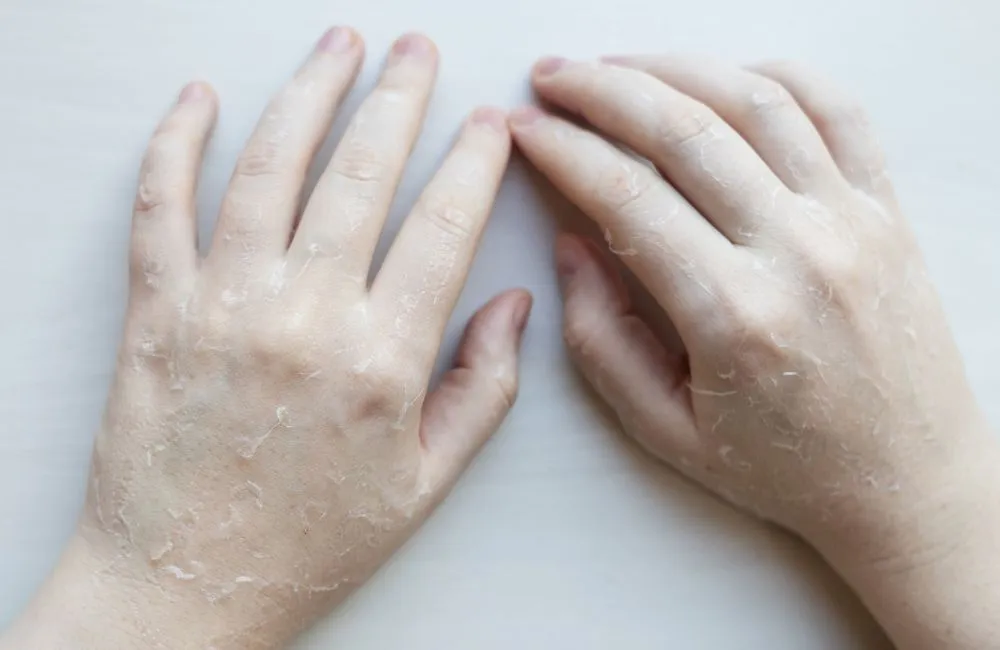Winter’s biting cold often leaves hands and feet parched, cracked, and prone to irritation. Repairing dry hands and feet with tallow balm combines ancestral wisdom and modern skin science to restore barrier function, deliver deep hydration, and soothe inflammation. Its composition closely resembles human sebum, making it especially effective for winter-stressed skin.
In this post, you’ll learn what causes winter dryness, why beef tallow closely mimics human skin lipids, how its nutrients and fatty acids support repair and hydration, tips for integrating tallow balm into a winter skincare routine, and where to find high-quality tallow-based balms for hands and feet.
Tallow Balm: Understanding Winter Dryness on Hands and Feet

Winter dryness happens when cold air and low humidity take more moisture from your skin than it can naturally replace. The outer layer of the skin loses oils, causing water to escape and leaving hands and feet prone to cracks, redness, and irritation. Frequent washing, friction, and the naturally low oil content in these areas make dryness even worse.
These factors together create rough, cracked skin that can be uncomfortable and painful, showing why a rich, nourishing moisturizer like tallow balm can help repair and protect winter-stressed skin.
How Does Cold Weather and Low Humidity Affect Skin Barrier Health?
Cold air and low humidity impair the stratum corneum by reducing lipid synthesis, which increases transepidermal water loss and leaves skin vulnerable to damage.
- Reduced sebum and ceramide production diminish natural hydration.
- Microfissures develop as lipids disperse, allowing irritants to penetrate.
- Impaired barrier function triggers redness, tightness, and flaking.
These processes set the stage for cracking, driving the need for targeted lipid replenishment and barrier support. Reference: PubMed: Cold air and low humidity impair the stratum corneum barrier function
Why Are Hands and Feet More Prone to Winter Dryness and Cracking?
Hands and feet have fewer oil glands and thicker epidermal layers, resulting in slower lipid turnover and reduced natural emollient production.
- Palms and soles lack sebaceous activity, hindering moisture retention.
- Frequent washing and exposure to cold intensify barrier disruption.
- Pressure and friction accentuate fissure formation on heels and knuckles.
An effective winter remedy must address low lipid content and reinforce barrier resilience where skin is inherently fragile.
What Are Common Symptoms and Risks of Winter Dry Skin?
Winter-induced dryness presents as tightness, scaling, painful fissures, and itching that can escalate to infection if left untreated.
- Flakiness and rough patches often precede deeper cracks.
- Persistent itching leads to scratching and potential bacterial entry.
- Chronic barrier breakdown can worsen eczema or psoriasis flare-ups.
Early intervention with restorative emollients prevents these complications while supporting long-term skin health.
What Makes Tallow Balm Effective for Winter Skin Repair?
Tallow balm is made from rendered beef fat, offering a lipid profile remarkably similar to human skin. Its fatty acids—palmitic, stearic, and oleic acids—penetrate and repair the barrier, deeply hydrating and reducing inflammation. Studies show that formulations containing these fatty acids enhance lipid production in damaged skin, rebuilding an effective barrier without clogging pores.
Essential Fatty Acids in Tallow Balm
- Oleic Acid: Improves absorption and penetrates the dermis.
- Palmitic Acid: Locks in moisture and reduces water loss.
- Stearic Acid: Creates a protective, velvety layer.
- Linoleic Acid: Supports ceramide synthesis and reduces flakiness.
- Conjugated Linoleic Acid (CLA): Calms redness and inflammation.
These fatty acids work together to rebuild a resilient barrier and maintain hydration through harsh winter conditions. Research shows that CLA reduces inflammation and enhances skin barrier function in models of atopic dermatitis.
Vitamins in Tallow Balm Support Skin Healing
Tallow balm is rich in fat-soluble vitamins that enhance cellular repair:
- Vitamin A: Accelerates epithelial renewal and smooths roughness.
- Vitamin D: Modulates immune responses for balanced inflammation control.
- Vitamin E: Protects against oxidative damage.
- Vitamin K: Improves microcirculation and diminishes discoloration.
This nutrient combination stimulates the skin’s intrinsic repair systems, improving the appearance and resilience of winter-stressed hands and feet.
Anti-inflammatory Properties for Sensitive Skin
Natural antioxidants and CLA in tallow balm help reduce inflammation, making it gentle enough for sensitive skin and conditions like eczema or psoriasis. CLA calms inflammatory signals, phytosterols help reduce redness, and linoleic acid repairs the skin’s protective barrier. Together, these ingredients soothe and protect the skin without causing irritation.
Where to Get Tallow-Based Balms
At Tallow and Honey, we believe skincare should be simple, natural, and deeply nourishing. That’s why our handcrafted tallow-based balms are made with pure, all-natural ingredients inspired by the wisdom of ancient healing. We offer a wide range of products tailored to different skin types and needs, each carefully formulated to restore balance and support your skin naturally. For dry winter hands and cracked heels, we recommend trying our Basic Bee balm — a rich moisturizer perfect for soothing and protecting your skin during the colder months. You can also explore our full collection of tallow balms to find the right match for your daily skincare routine.
Integrating Tallow Balm into Your Winter Skincare Routine

Tallow balm works best when used consistently as part of a winter skincare regimen. Its deeply hydrating and barrier-repairing properties complement everyday habits, helping hands and feet stay soft, supple, and protected against harsh cold. Many people apply a small amount to dry areas after washing or showering, when the skin is slightly damp, to lock in moisture. Using it before bed allows the balm to work overnight, supporting skin repair while minimizing exposure to environmental stressors.
Incorporating tallow balm alongside gentle cleansing and protective measures—like wearing gloves or socks in cold conditions—enhances its effectiveness. Over time, this consistent approach reduces flakiness, prevents cracks, and maintains the skin’s natural resilience throughout the winter months.
Conclusion
Tallow balm is a natural and effective solution for repairing dry, cracked hands and feet during the harsh winter months. Its unique combination of fatty acids, fat-soluble vitamins, and anti-inflammatory compounds restores the skin’s barrier, locks in moisture, and soothes irritation. By incorporating tallow balm into your winter skincare routine, you can maintain soft, healthy, and resilient skin even in cold, dry conditions.
Interested in extending the benefits of tallow to your nails? Learn how tallow can strengthen and nourish your nails by reading our article on Tallow for Nail Care.
Have questions? Check out our FAQs here to learn more about our tallow balms and how they can support your winter skincare routine.
